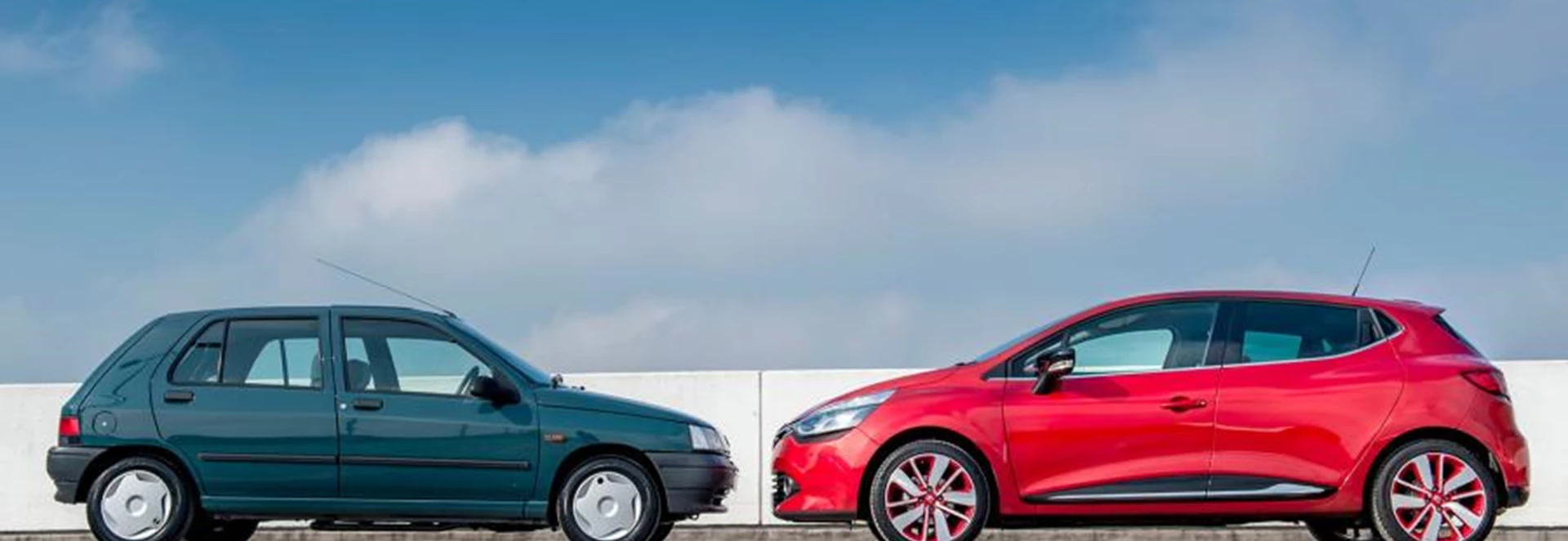Incredibly, it’s now 25 years since Renault launched its all-new supermini for the 1990s, the Clio. Throughout the intervening years and through a total of four successive generations, the Clio has gone on to become one of the world’s best-loved small cars.
To some, it will be familiar as the car they learned to drive in, or perhaps the first car that they bought after passing their test. To others, it’s their dependable and much-loved daily driver, while a certain few will enjoy the wilder, more performance-oriented side of the car’s lineage.
It’s come a long way since it was first introduced back in 1991, but despite its many guises the Renault Clio has always kept its unique sense of style and practicality at heart. Since its launch, more than 13 million of the things have been sold worldwide, with over 1.2 million of those sold in the UK alone.
To honour one of the nation’s favourite cars, one of the most popular sights on the roadways and easily one of the most famous French cars of all time, we take a look at each generation of the much-loved Clio to see how far it’s come.
Clio I: Origin of a species
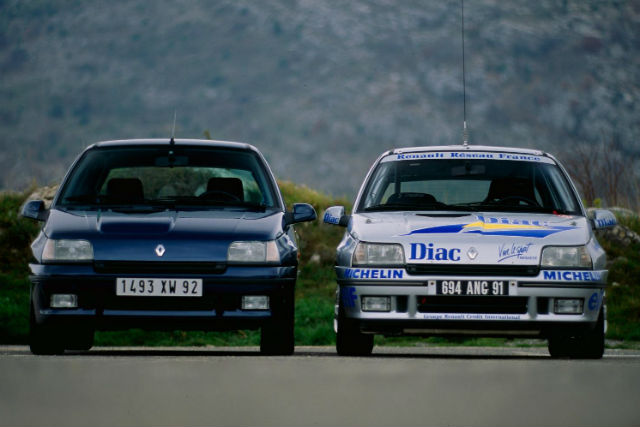
The original Renault Clio made its debut at the 1990 Paris Motor Show as a successor to cars like the Renault 5. Named after the Greek word for “to make famous”, the Clio was built around an ethos of creating big car refinement in a compact, accessible supermini package.
Longer, wider and with a larger wheelbase than the models which preceded it, the first-generation Clio officially arrived in the UK on 29th March 1991. Despite having not been released yet, by that stage it had already scooped the European Car of the Year Award and went on to sell more than 300,000 models before it was replaced in 1997.
It wasn’t just the car itself which proved such an instant hit with the public, either. The Clio’s introduction also marked the debut of one of the most iconic TV advertisement campaigns of all time: ‘Papa & Nicole’.
There have been plenty of iconic automotive adverts over the years, but few captured the imaginations of the public in the way that this campaign did. Taking place over eight years, one for each year the Clio was in production, it followed the story of a young French girl and her father.
Each ad had its own self-contained story, but watched together formed a miniature film following Nicole’s growth into a sophisticated young woman and mirroring the development and refinement of the Clio over the years.
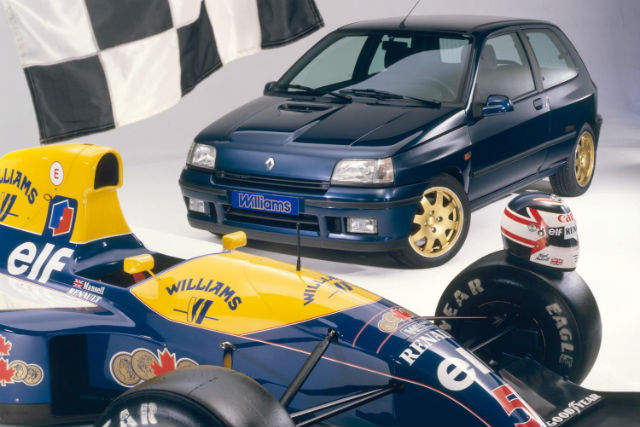
Renault would go on to strike advertising gold again a few years later with Thierry Henry and the famous ‘Va-Va-Voom’ campaign. Between the Clio itself and its smart advertising, the UK’s faith was nearly single-handedly restored in a brand which had been in steep decline towards the start of the 1990s.
Of course, Renault is also known for its 115-odd years of motorsport heritage, and as a result the marque wasted little time in bring a hot version of the Clio to market. The latter half of 1991 saw the debut of the Clio 1.8 16V, the spiritual successor to much-loved cars like the Renault 5 Turbo and 5 GT Turbo.
Outfitted with flared wings, a huge power bulge in the bonnet and producing a meaty 137 horsepower, the 16V featured heavily in Renault’s sporting endeavours from 1991 onwards. By 1993, the 16V had mutated into the special-edition Renault Clio Williams, built to celebrate Renault’s F1 World Championship wins and also to satisfy the company’s rallying ambitions.
More powerful, with a bigger 2.0-litre engine, wider track and a close-ratio gearbox, the Williams was originally marketed as a limited-run model but went on to appear in two distinct series, earning itself a place among the legends with its performance and iconic blue and gold colour scheme.
Clio II: Bigger, better still
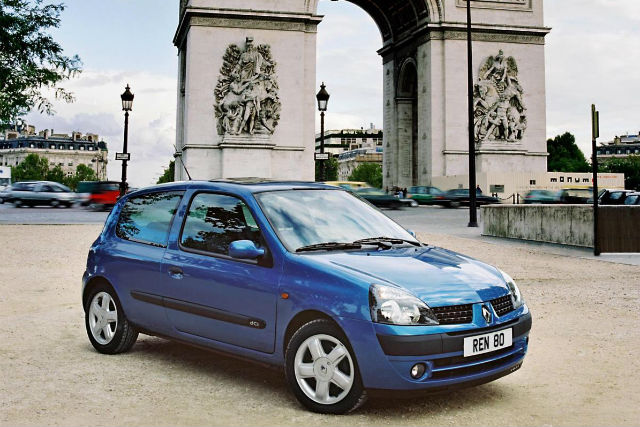
Needless to say, the inevitable second-generation Clio had its work cut out for it given the popularity and reception that the original Mark I Clio enjoyed. True to the original’s ethos, the new Clio was introduced in 1998 and was bigger still, with more interior space and an all-new, curvy body design.
A reflection of the changing times, the second-gen Clio featured an increased focus on emissions and fuel efficiency, while it also made use of then-advanced materials like polycarbonate for the headlamp covers and, on certain models, aluminium for the bonnet cover.
The second Clio also made supermini history with the inclusion of ABS as standard on half of the range, while it also came with front side airbags and a variety of comfort-oriented features like power steering and stalk-mounted fingertip controls for the sound system.
It wasn’t all about comfort, however, and the second-generation Clio saw the introduction of the first Renaultsport model, a sub-brand lineage which continues to this day with red-hot performance hatches like the Clio Renaultsport Trophy 220 and the Megane 275 Trophy-R.
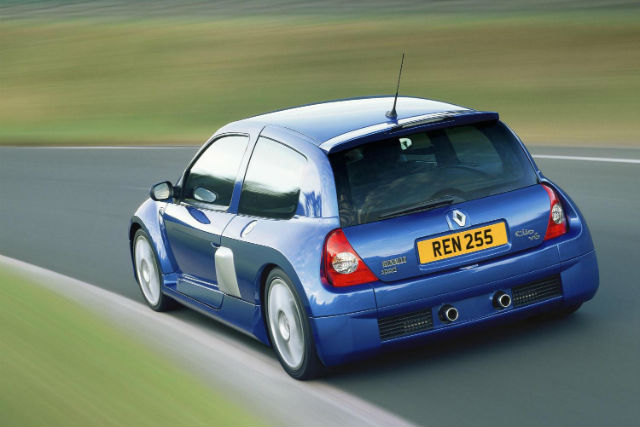
The original Renaultsport model was titled the Clio Renaultsport 172, which matched a new 172 horsepower 2.0-litre engine with larger wheels, puffed-out wheel arches and a sportier interior. Its success led to an updated ‘phase 2’ version in 2001, plus various other models like the more powerful 182 and the 182 Trophy.
Arguably the high point of the Clio II was the really rather extreme Clio V6 performance hatchback, which was originally built as a showcar for the 1998 Paris Motor Show. It went down so well that Renault put it into production, complete with a brawny 230 horsepower 3.0-litre litre V6 engine mounted in the middle of the car, along with a body kit that would make many a supercar blush.
Like the more mainstream Renaultsport models, it was swiftly upgraded with a 255 horsepower version and these hand-built miniature supercars currently remain some of the most unique and sought-after hatches anywhere in the world.
Clio III: Renault’s small car grows up
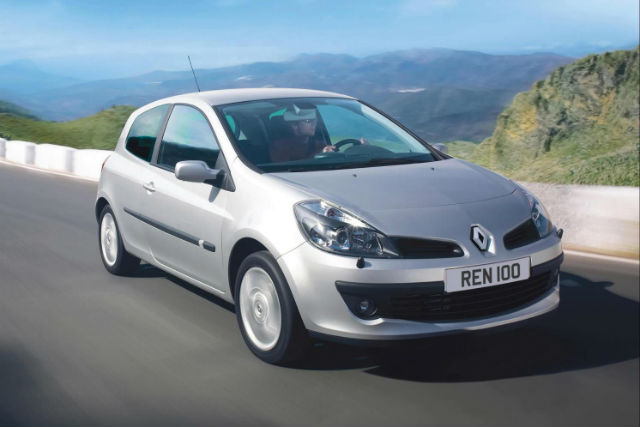
Although the Clio II is still one of the most recognisable cars on the road and, for many, the definitive Clio, by 2005 it had begun to become a little old hat and, as a result, the third generation model was introduced at the Frankfurt Motor Show that year.
As with its predecessors, the Clio still adhered to the same ‘big car in a small package’ attitude, but this model brought never before seen levels of quality and sophistication to the range, with new soft-touch materials and other ‘big car’ features like keyless start.
Like the first generation version, the Clio III bagged the European Car of the Year award, again making history as the Clio officially became the first car in the world to win the prize twice.
Originally, the third-gen Clio was available only as a three-door, while the five-door variant was available early in 2006. By 2009, it had undergone its first major facelift to further improve its interior and its styling, while a sporty GT model was introduced to bridge the gap between the regular Clio and the racy Renaultsport range.
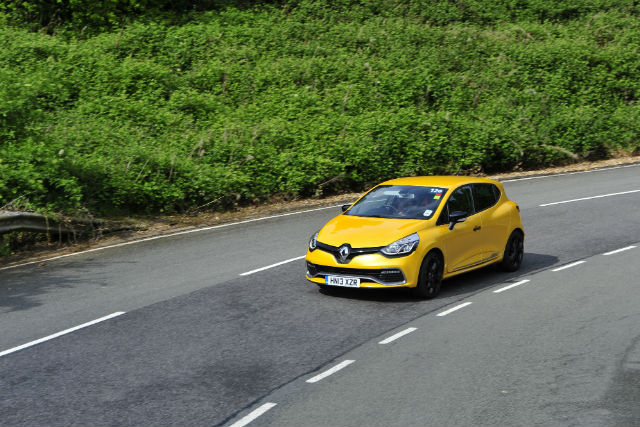
Just as the regular Clio got more sophisticated, the sporty Renaultsport offerings got rowdier, with the next Clio-based instalment featuring a 197 horsepower engine and a new six-speed gearbox, along with a rakish body kit and a Formula One-inspired rear diffuser.
A special edition in the form of the R27 F1 Team model, built to celebrate Renault’s consecutive F1 World Championship victories in 2005 and 2006, followed before the Renaultsport Clio 197 evolved into the Clio 200 by 2009.
Imbued with even more power and torque thanks to careful tuning from the Renaultsport division, the third-gen Clio was seen out with the limited-edition Raider variant, which features matte grey or red paintwork, plus leather upholstery and 18-inch black alloy wheels.
Clio IV: The present day
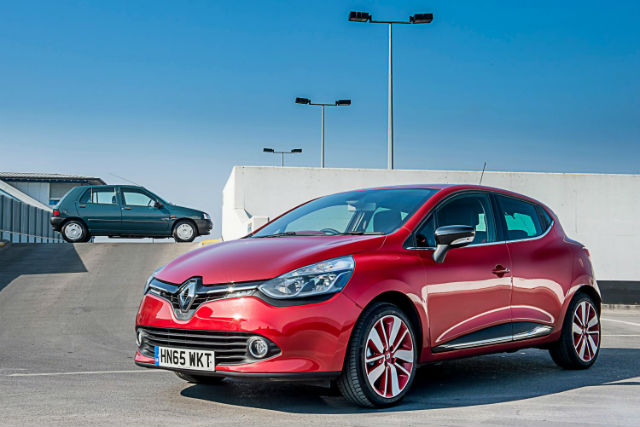
The current-generation Clio is probably the biggest departure yet from the original Mark I version released all the way back in 1991. Unveiled in 2012, it deliberately set out to reinterpret and redefine the visual qualities of earlier models, with a longer and sleeker appearance.
As with each of its predecessors, the fourth-generation Clio featured a larger wheelbase still to further improve interior roominess, but the coupe-style design and lowered roof gives it a wider, more assertive and contemporary appearance.
While the dimensions increased, the engines have downsized thanks to the upsurge in the use of turbocharging technology, with the smallest engine in the range a tiny 0.9-litre three-cylinder petrol motor. Along with the new engines came the option of a new six-speed dual-clutch gearbox, unimaginable in the era of the original first-gen Clio.
Its focus on technology extends to the interior, with an all-new dashboard design inspired by the shape of an aircraft’s wing, along with a tablet-style fascia, integrated smartphone-style apps and more personalisation options than ever available before.
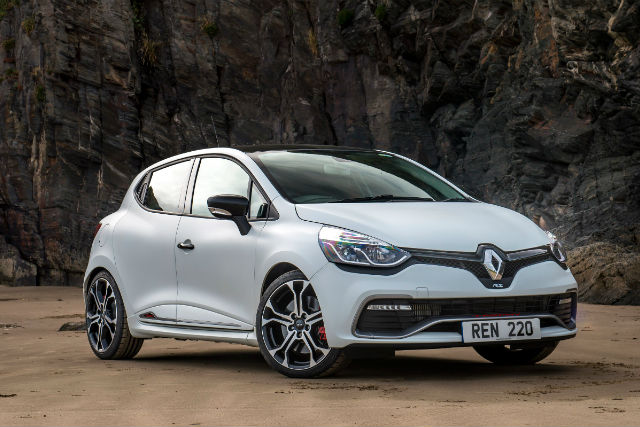
Technology like dual-clutch transmissions and turbocharged engines were once the sorts of things that would appear only on sports cars. However, just because they’ve now been adopted by mainstream cars doesn’t mean that the more hardcore offerings miss out.
True to form, the fourth-generation Renaultsport models include the Clio Renaultsport 200, which comes powered by a turbocharged 1.6-litre engine, along with a dual-clutch gearbox. An even more potent version debuted last year, known as the 220 Trophy, with more power, a firmer chassis and an even quicker gearbox for lightning-fast shifts.
Certainly, the Clio had a lot to live up to, following in the tracks of classics like the Renault 4 and the Renault 5. Its forebears made major contributions to the appeal of the modern supermini, but Renault’s biggest little car is one of the few cars that genuinely came to redefine the small car segment.
After a quarter of a century and more than 13 models later, the Clio continues to assert its position as one of the most popular and best-loved small cars in history. Not bad for a little French hatchback.
